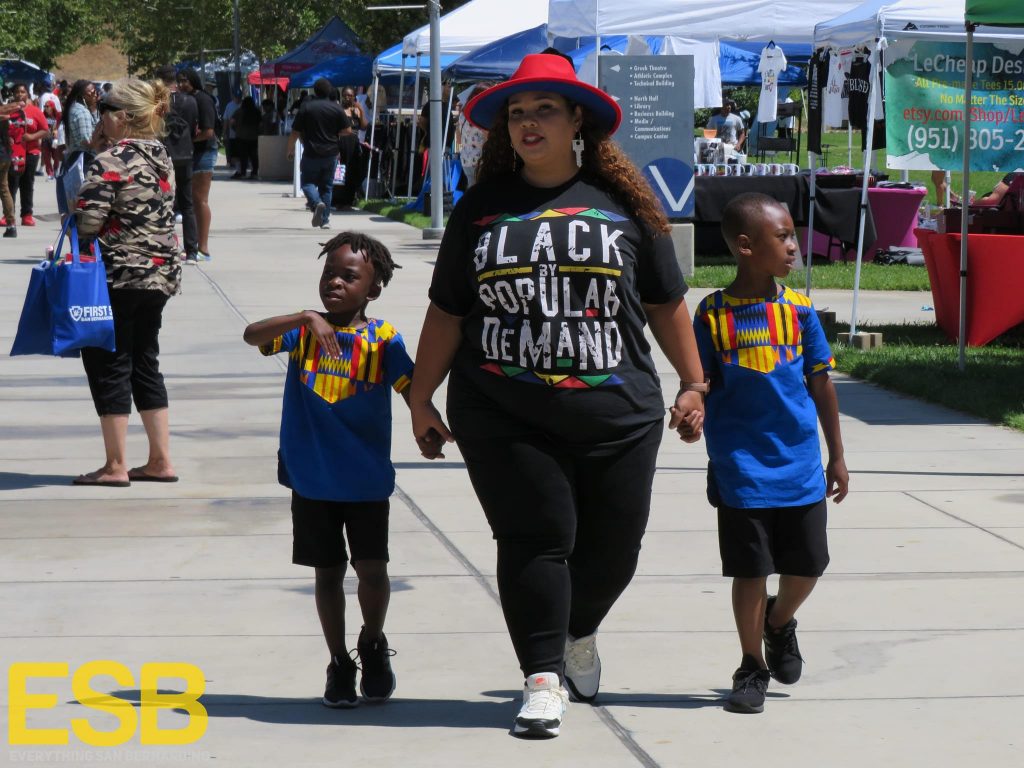By Aldon Thomas Stiles and Edward Henderson | California Black Media
Diane Lanette Barkum is an in-home care provider and mom of three. She commutes about 40 minutes every workday between the Riverside County cities of Lake Elsinore, where she lives, and Moreno Valley, where her job is.
Over the last few months, Barkum says she has been stressed and scraping by, struggling to balance sharp increases in the cost of gas and food with making enough money to pay for other expenses.
“What worries me most about rising prices is that they’ll continue to rise, making it more difficult for low-income working parents to be able to support their families,” she said.
Terence Henry, who lives in Patterson in the Central Valley, used to drive 77 miles to the Bay Area to make deliveries as an independent contractor. He says the high cost of gas forced him to give up the job late last year and opt for only making local runs.
“It used to cost me about $50 each way to fill up the tank to get to Oakland, San Francisco and other cities,” he said. “It just was not worth it anymore. I was losing money.
Barkum says she hopes there is relief around the corner for people like her who are working hard, raising children and still unable to make ends meet.
Barkum and Henry are not alone. According to the Public Policy Institute of California, a majority of Californians (27 %) say jobs, the economy and inflation are their top concern over housing costs and availability (12%) and homelessness (11%).
Across the United States, the inflation rate is 8.6% — up from 4.7% last year, according to the U.S. Department of Labor. And the American Automobile Association reports that the average price per gallon of regular gas in California has risen above $6. Several economists agree that the effects of inflation hit poor and working-class families the hardest.
In Southern California, the inflation rate in Riverside and San Bernardino counties in the Inland Empire has risen to 9.4%, according to the UCLA Anderson School of Management. That number is among the highest increases in the country.
Last week, the California Legislature approved a record $300 billion-plus budget for the next fiscal year, the largest annual spending plan in the state’s history. The package includes a surplus of close to $100 billion dollars, half of which must be used to fund schools by law.
Included in the budget are plans to spend the other half. So far, legislators have allotted $8 billion in rebates to taxpayers. Another $1.3 billion has been designated for grants to small business and non-profit organizations. Another $600 million has been specified for tax credits to the lowest-income Californians.
While lawmakers – both Democrats and Republicans – and the governor’s office agree that addressing spiraling inflation is urgent, they have not reached agreement on how to provide relief to struggling families.
Anthony York, Newsom’s senior advisor for communications said in a statement that the Governor still wants “more immediate, direct relief to help millions more families with rising gas, groceries and rent prices.”
At the federal level, US Federal Reserve Chairman Jerome Powell approved a three- quarter (0.75) percentage point rate hike — the highest single percentage rate increase since 2008.
“African American owned businesses and families are experiencing the damaging effects of inflation including the current interest rate increase instituted by the Federal Reserve Board. It is important for financial institutions to work with Black-owned businesses and their families to help navigate the rising cost of capital needed to operate and sustain all businesses,” said Timothy Alan Simon, Board Chair of the California African American Chamber of Commerce.
By statute, Gov. Newsom has until June 30 to veto the Legislators’ budget bill or sign it into law.
If the governor approves the budget, it will take effect July 1, the beginning of the 2022-23 fiscal year. However, negotiations are expected to continue through the end of August as lawmakers hammer out final details.
During the public comment section of the Assembly Budget Committee hearing on June 13, Adrian Mohammed, an African American representative of the Bay Area Health Initiative spoke about the exclusion of a $500 million proposal to address Black housing and anti-displacement in the Bay Area in the budget the Legislature passed.
“We believe that this is an incredibly timely and incredibly necessary ask and we ask that you continue to work with us to get this to come to fruition,” Mohammed told lawmakers.
Two days later, Republican leaders held a rally last week at the State Capitol blasting their Democratic colleagues for their inaction on addressing the high cost of gas.
“Legislative Republicans are gathered here to remind Californians that it has been 100 days since the governor and the Democrats here in Sacramento promised California consumers relief on gas prices. 100 days is far too long,” said Assemblymember James Gallagher (R-Yuba City). After 100 days, we are still waiting with no relief in sight. We need action now. We’ve been calling since January to suspend the gas tax.”
Senate Pro Tem Toni Atkins (D-San Diego said the state’s wealth needs to work for hardworking Californians. She pointed to a provision in the budget that provides $200 rebates to working families earning up to $250,000 a year and $125,000 for single filers.
“We are focused on providing struggling families the relief they need to weather rising costs of fuel and groceries, investing ongoing funding in core programs and services, funding one-time infrastructure projects that will keep California moving for years to come,” she said.
Assembly Speaker Anthony Rendon (D-Lakewood) echoed Atkin’s optimism.
“We share a firm belief that our state is strongest when it cares for the weakest among us,” said Rendon. “Our budget proposal continues to lay the groundwork with infrastructure and other investments for future prosperity.”
 Westside Story Newspaper – Online The News of The Empire – Sharing the Quest for Excellence
Westside Story Newspaper – Online The News of The Empire – Sharing the Quest for Excellence






